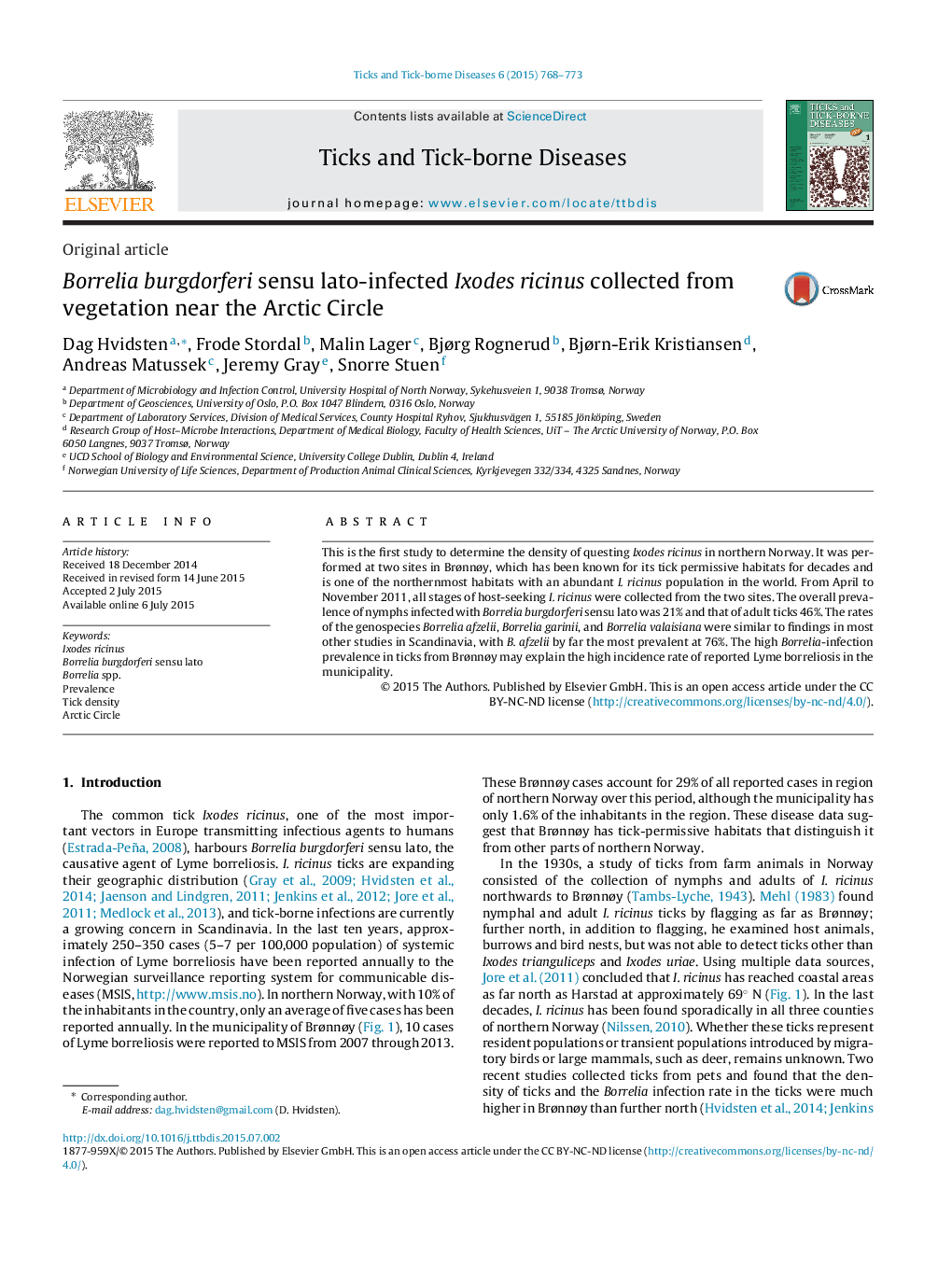| Article ID | Journal | Published Year | Pages | File Type |
|---|---|---|---|---|
| 5807196 | Ticks and Tick-borne Diseases | 2015 | 6 Pages |
This is the first study to determine the density of questing Ixodes ricinus in northern Norway. It was performed at two sites in Brønnøy, which has been known for its tick permissive habitats for decades and is one of the northernmost habitats with an abundant I. ricinus population in the world. From April to November 2011, all stages of host-seeking I. ricinus were collected from the two sites. The overall prevalence of nymphs infected with Borrelia burgdorferi sensu lato was 21% and that of adult ticks 46%. The rates of the genospecies Borrelia afzelii, Borrelia garinii, and Borrelia valaisiana were similar to findings in most other studies in Scandinavia, with B. afzelii by far the most prevalent at 76%. The high Borrelia-infection prevalence in ticks from Brønnøy may explain the high incidence rate of reported Lyme borreliosis in the municipality.
